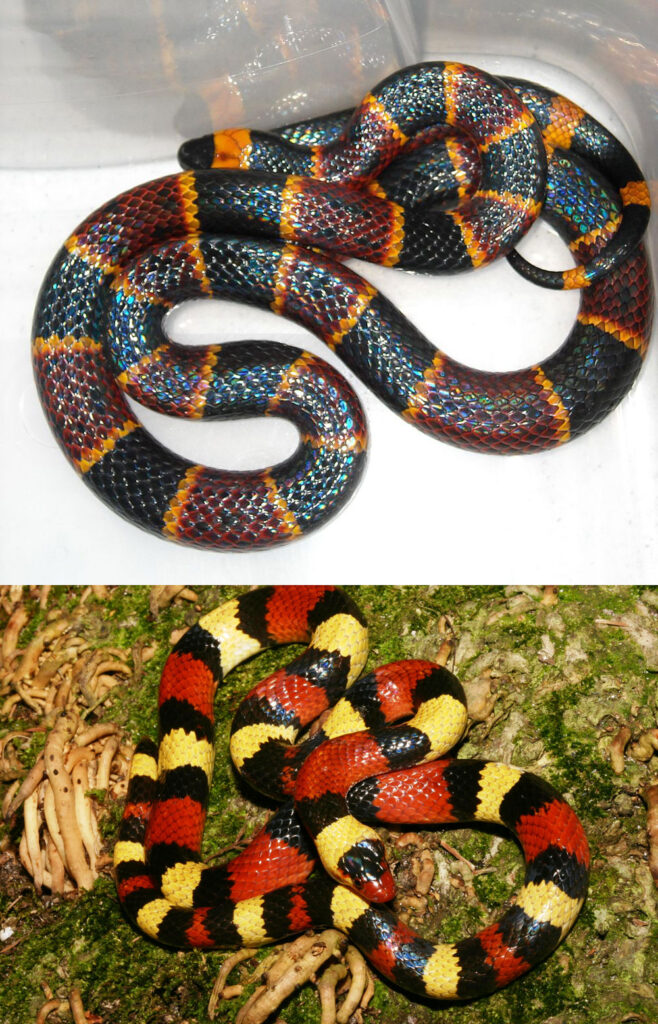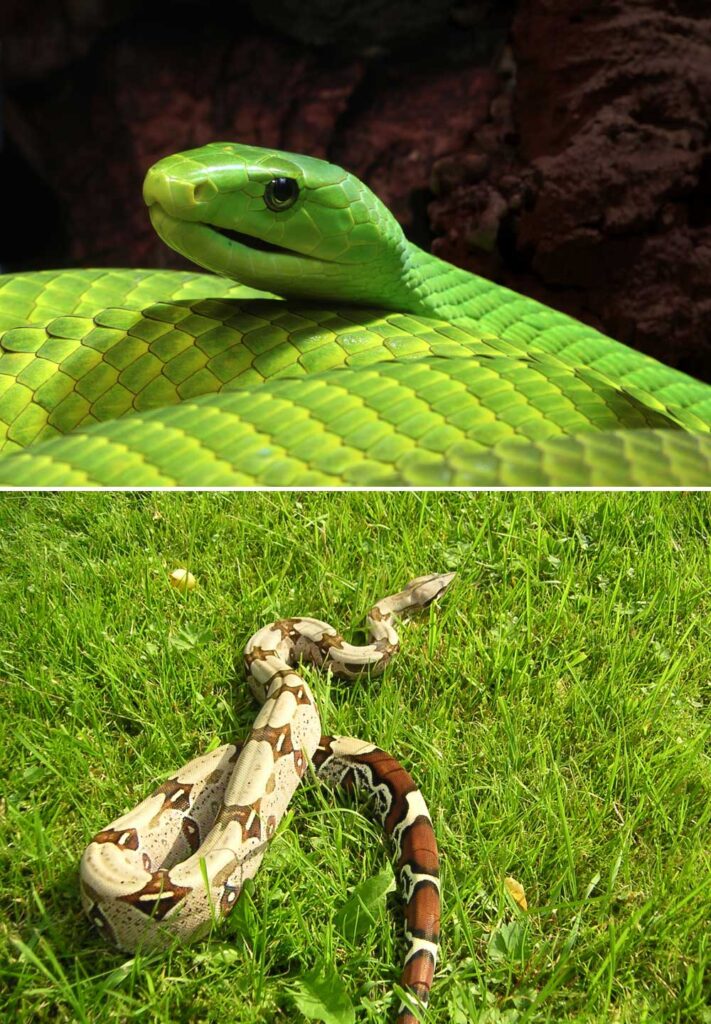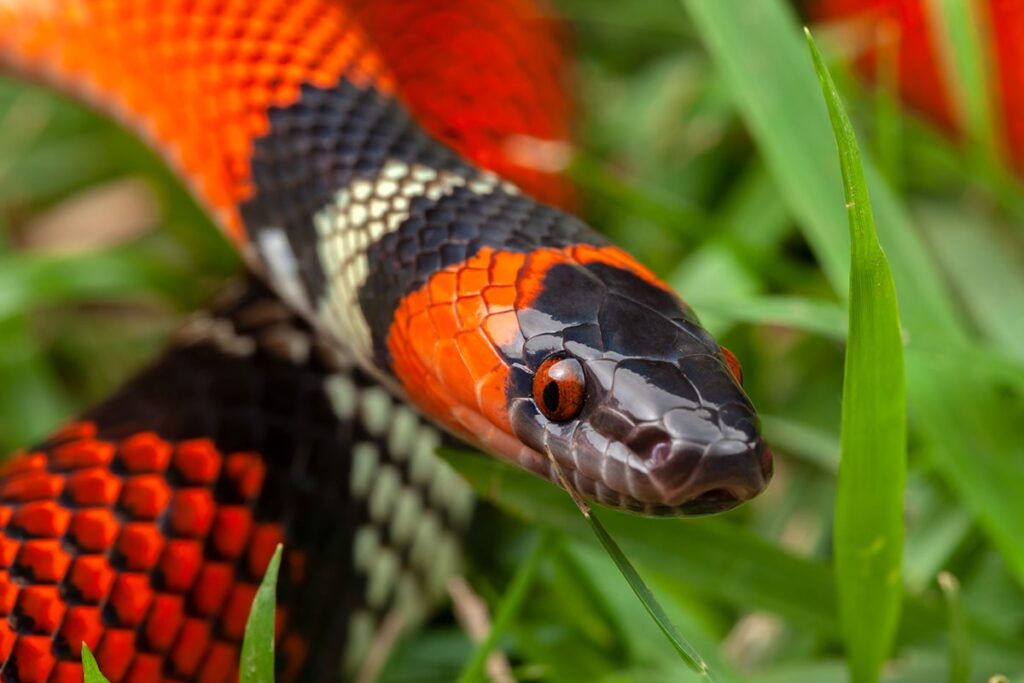Facts about snake food
- Predators: Snakes are predators that eat small to medium-sized animals such as insects, birds, reptiles, amphibians, rodents, small domestic animals, etc.
- Consumption of prey: Snakes swallow all their prey whole and are capable of consuming animals 3 times the size of their own head. This is possible because the snake’s upper jaw can be separated from the lower jaw
- Teeth: Snakes’ teeth face backwards – like barbs – which helps snakes hold onto their prey, ensuring that the prey doesn’t escape
- Poisonous and strangler snakes: There are 2 main categories of snakes: venomous snakes and constrictors. As the names suggest, venomous snakes kill their prey using venom, whereas strangler snakes strangle their prey
- Food intake: Snakes don’t need to hunt every day; some species – such as anacondas and pythons – can survive (after a large meal) for up to 1 year without food
- Intelligent hunting: Many snake species are considered relatively intelligent; for example, some are capable of releasing bait to capture prey

Fact: You can tell the difference between the venomous coral snakes (top) and the non-venomous scarlet king snake (bottom) by this phrase; if red touches yellow, it’s venomous – if red touches black, it’s non-venomous
Facts about snake species
- Species: There are around 3,400 known snake species in the world
- Toxicity: There are several ways to tell if a snake is venomous or not:
- Pupils: Snakes with diamond-shaped pupils are venomous. Snakes with round pupils are not venomous
- Colors: This mnemonic helps to recognize the difference between coral snakes (Elapidae), which are venomous, and the scarlet king snake (Lampropeltis triangulum elapsoides), which is not venomous; if red touches yellow, it is venomous – if red touches black, it is not venomous
- Climbing snake: The corn snout (Pantherophis guttatus) can use its scales to climb trees; it can turn the scales at an angle so that they get stuck in the bark of trees, helping the snake to climb
- Flying snake: Snake species Chrysopelea paradisi can fly! It uses the same principle as a Frisbee and soars from branch to branch in the trees of the forest. From a treetop, it can hover about 100 meters horizontally. Watch the flying snake video below:

Fact: Snakes can be divided into 2 main categories: venomous snakes and constrictors. The picture shows a green mamba (Dendroaspis angusticeps), which is a venomous snake, and a red-tailed king boa (Boa constrictor constrictor), which is a constrictor
Anatomy and behavior
- Eyes and ears: Snakes have no eyelids or ears
- Senses: Snakes hunt and orient themselves using their sense of smell (tongue) and sight, and by feeling vibrations in the ground
- Sense of smell: Snakes smell by sticking their forked tongue into the air
- Cold-blooded animals: Snakes are cold-blooded, which means they rely on the warmth of the sun to be active. For this reason, they regulate their body temperature using sun and shade
- Winter hibernation: In colder climates, snakes go into hibernation
- Change of hands: Snakes shed their skin up to 6 times per year
- Aggressiveness: Most snake species are not aggressive towards humans, but we have a learned perception of snakes as being dangerous. The majority of snakes prefer to flee rather than attack when close to humans, but in certain situations they will attack because they feel too threatened to flee
- Isolated animals: Snakes are generally very isolated animals. Naturally, they do come across each other by chance. However, during mating season, they may temporarily stay near each other for obvious reasons
Facts about snake habitats
- Distribution: Snakes are found everywhere in the world with the exception of: Antarctica (South Pole), Iceland, Ireland, Greenland, New Zealand and many smaller islands in the Atlantic, Pacific and Indian Oceans
- Environments: Snakes live in many different environments, including forests, deserts, mountains, plains, oceans and lakes
- The tropics: The majority of snakes live in the Earth’s tropical regions
Reproduction
- Vivipari: The vast majority of snakes lay eggs, but some species keep the egg in their body until it is almost ready to hatch. There are even a few viviparous species where there is no egg, but instead a yolk sac and a uterus that nourishes the fetus (vivipari). This phenomenon is very common among mammals, but highly unusual among reptiles. Examples of viviparous snakes include the large anaconda (Eunectes murinus) and the king boa (Boa constrictor)
- Care: Each snake species has different patterns of care for their young; some leave the eggs before they hatch, others immediately after hatching and in a few cases they stay with their young for a little longer – but generally the young are left alone immediately before or after hatching, making them vulnerable to predators


